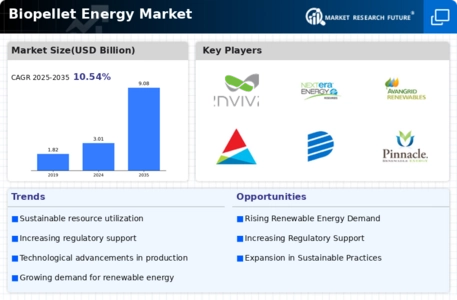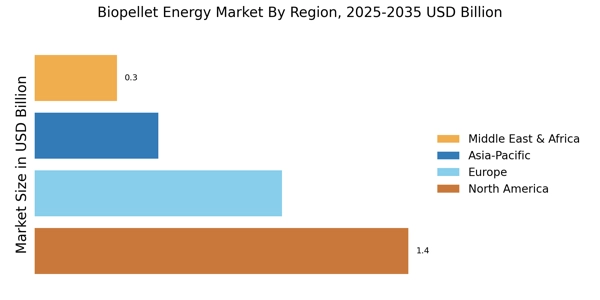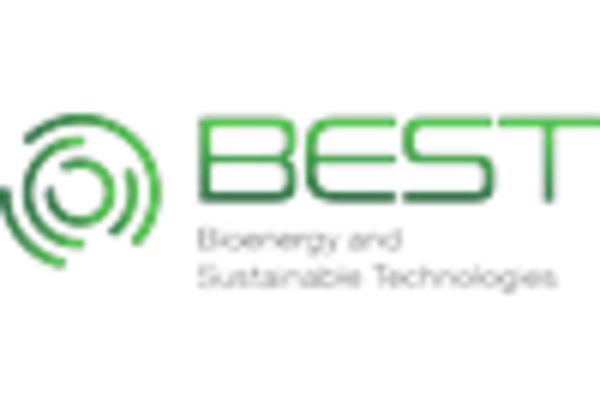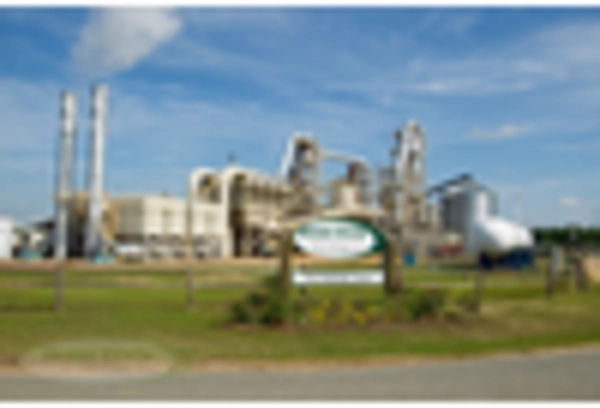Increasing Energy Security
The Biopellet Energy Market is experiencing a notable shift towards enhancing energy security. As nations seek to reduce dependence on fossil fuels, biopellets emerge as a viable alternative. This transition is driven by the need for sustainable energy sources that can be locally sourced, thereby minimizing vulnerability to global energy price fluctuations. In 2025, the biopellet sector is projected to contribute significantly to energy portfolios, with estimates suggesting a growth rate of approximately 8% annually. This trend indicates a growing recognition of biopellets as a strategic asset in energy diversification, fostering resilience against geopolitical tensions and supply chain disruptions.
Growing Industrial Applications
The Biopellet Energy Market is witnessing a surge in industrial applications, particularly in sectors such as manufacturing and heating. Industries are increasingly adopting biopellets as a cost-effective and environmentally friendly energy source. In 2025, it is anticipated that the industrial sector will account for a substantial portion of biopellet consumption, with estimates suggesting a market share increase of 25%. This trend is driven by the need for industries to comply with stringent environmental regulations and to enhance their sustainability profiles. The versatility of biopellets makes them suitable for various applications, further solidifying their role in the energy landscape.
Rising Consumer Awareness and Demand
The Biopellet Energy Market is experiencing a notable increase in consumer awareness regarding renewable energy options. As individuals and businesses become more informed about the environmental benefits of biopellets, demand is expected to rise significantly. In 2025, consumer preferences are likely to shift towards sustainable energy solutions, with biopellets being recognized for their low carbon footprint. Market Research Future indicates that consumer demand for biopellets could grow by 30% over the next few years, driven by a collective desire to support eco-friendly practices. This heightened awareness is fostering a more robust market for biopellets, encouraging producers to innovate and expand their offerings.
Environmental Sustainability Initiatives
The Biopellet Energy Market is increasingly aligned with environmental sustainability initiatives. As climate change concerns escalate, there is a pressing need for cleaner energy solutions. Biopellets, derived from organic materials, offer a carbon-neutral alternative to traditional fossil fuels. In 2025, the market is expected to witness a surge in demand, driven by regulatory frameworks aimed at reducing greenhouse gas emissions. Countries are implementing policies that incentivize the use of biomass, with projections indicating that biopellet consumption could rise by 15% in the next five years. This alignment with sustainability goals positions the biopellet sector as a crucial player in the transition to a low-carbon economy.
Technological Advancements in Production
The Biopellet Energy Market is benefiting from rapid technological advancements in production processes. Innovations in pelletizing technology and feedstock processing are enhancing efficiency and reducing costs. In 2025, the market is likely to see a proliferation of advanced production facilities that utilize state-of-the-art machinery, leading to higher quality biopellets. These advancements not only improve the energy density of biopellets but also expand the range of feedstocks that can be utilized. As a result, production capacity is projected to increase by 20%, making biopellets more accessible and competitive against conventional energy sources.


















Leave a Comment